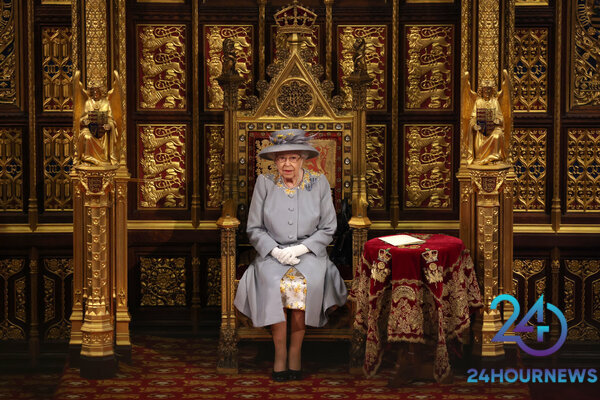The fall of "London Bridge": Secret plans for the ten days following the death of Queen Elizabeth Buckingham Palace announced the death of Britain's Queen Elizabeth II after doctors announced that her health had deteriorated, and she was being monitored, while several royal family members flocked to Moral Palace, where she is currently residing in Scotland.
The fall of "London Bridge": Secret plans for the ten days following the death of Queen Elizabeth
Since the 1960s, planning has been made on how to handle the first ten days after Her Majesty's death, ensuring a smooth transition to the throne to her eldest son, Prince Charles - who would automatically become king upon her death, known as Operation London Bridge.
The British newspaper The Guardian and the US Politico website have previously revealed the much-rehearsed detailed plans for the ten days leading up to her funeral, including those of British officials.
However, the Guardian notes that plans have been frequently reassessed and updated over the years, meaning the London Bridge operation may have undergone last-minute changes.
What is the London Bridge operation?
Just as when a member of the royal family dies, there are strict plans in place for what happens next, and nothing is more important than the death of a head of state. Each member of the royal family has their own code name, detailing the plans made in the event of their death.
London Bridge Operation
In September last year, new details of Operation London Bridge were leaked indicating that the day of the Queen's death would be known as D-Day. If unchanged, the Queen's death will be referred to internally as "D-Day", the military term for a major new operation - most famously the 1944 Allied invasion of Normandy that declared the end of World War II.
The day after her death will be "D + 1" until her funeral at "D + 10", which will be declared a "National Day of Mourning", according to plans. UK government departments will be required to place flags at half-mast within 10 minutes after government officials have been told and directed to show "discretion".
Prince Charles will become king upon his mother's death and will address the nation on the day of his mother's death. The prime minister will be the first government official to issue an official statement.
The Queen will be buried 10 days after her death, and Prince Charles is expected to embark on a tour of the UK in the days leading up to the burial.
According to Politico, parliamentary work will be suspended for 10 days and the coffin of the sovereign of the country will remain for three days in both houses of Parliament. The Royal House will issue an official statement notifying the nation of the King's death.
Queen's funeral arrangements
The funeral will be a day of national mourning, although employers are not required to give employees a day off work. The funeral will be held at Westminster Abbey, a two-minute silence will be held at noon, and the Queen will be buried at King George VI Memorial Chapel.
The following days will see a tremendous amount of preparation for the funeral, including a formal rehearsal and the arrival of world leaders. If the plan is followed, the funeral will be on the tenth day at Westminster Abbey - the first funeral for a British monarch there since 1760.
And if the Queen dies at Balmoral, her body will initially remain at rest in her smallest palace, Holyrood House, in Edinburgh, according to The Guardian.
The coffin will then be taken to the Royal Mile to St Giles' Cathedral for a reception before being put on board the Royal Train at Waverley Station. Crowds of mourners are expected to gather at stations along the journey along the East Coast Main Line to throw flowers at the passing train, according to the American "New York Post" website.


.jpg)
